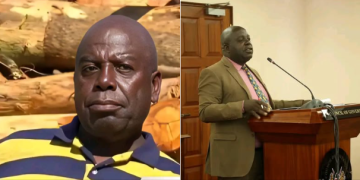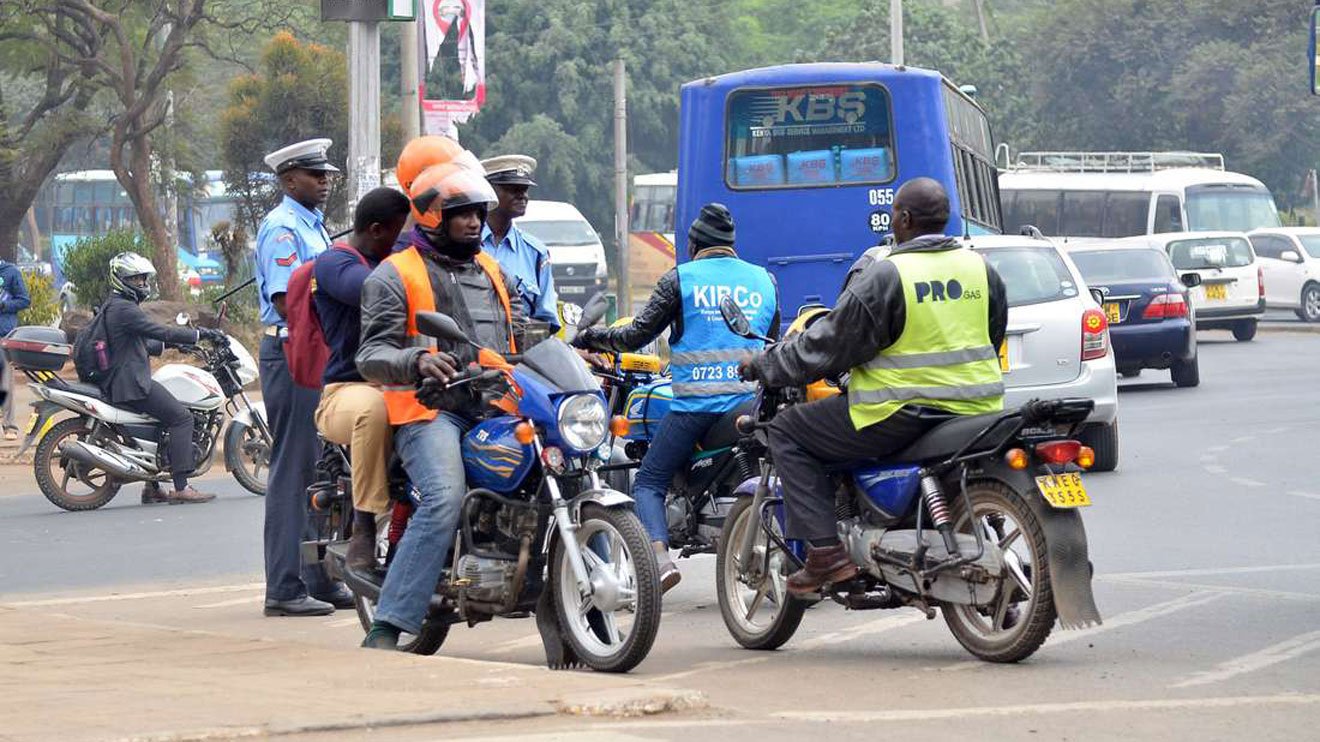Forty-year-old Joshua Cheruiyot Kirui and his Nepali guide Nawang Sherpa, 44, disappeared on Wednesday while attempting to summit Everest without supplementary oxygen.
The guide is yet to be found by the search team that had been deployed to locate the pair.
Mr Cheruiyot Kirui, an accomplished climber who had reached the peak of Mount Kenya more than 10 times, went missing above 8,000 metres on Mt Everest on Wednesday.
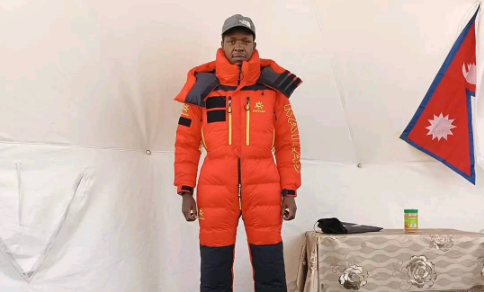
He was found lifeless in Everest’s ‘death zone’, name given to areas above 8,000 metres, on Thursday morning.
Now, the big question is – will Cheruiyot Kirui be brought home for burial?
Climbing Everest, the world’s highest peak, is considered extremely difficult and risky, even for experienced climbers.
Since it is physically very difficult for a human being to transport a frozen dead body at an altitude of 8000 meters.
However, some of the bodies have been removed; if they are discovered in a spot that is convenient, they can be dropped down on a rope once they have been removed. In situations where the body is located at a considerably lower altitude, such as at 7000 meters, helicopters can be utilized to transport it down.
One individual, Didier Delsalle, even managed to land his helicopter on the summit of Mount Everest. However, the weight of the helicopter needed to be decreased because it was no longer capable of lifting a body after that point.
As a result, the response is that removing a dead body from the highest point of Mount Everest is a task that is extremely challenging.
Even though some of the bodies on Everest are quite ancient, it is thought that there are approximately 200 bodies on the mountain.
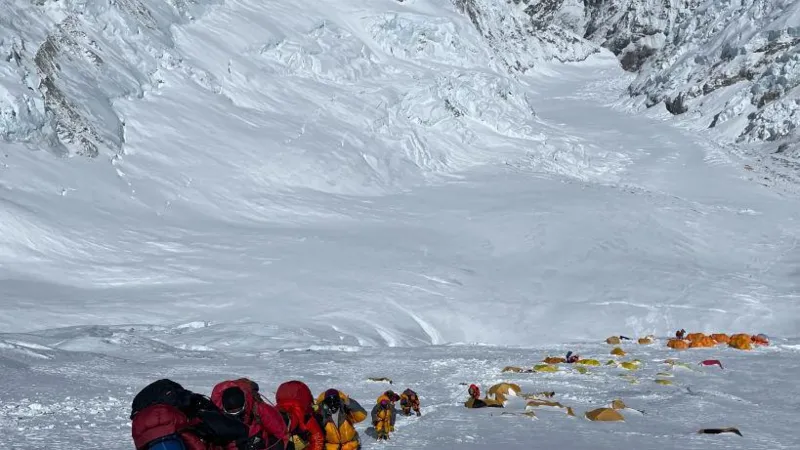
Some of them are brought down, provided that doing so is both feasible and secure. Others, in situations where bringing them down would put other people in danger, are moved into ravines or crevasses that are hidden from view.
For example, the well-known “green boots” — the identity of which is unknown to anyone — was recently relocated from his previous obvious location right next to the typical track. However, in order to spot him, you will need to know where to look. It is necessary to leave some in their current location.
The fact that a significant number of people who pass away on Everest do so in the “death zone” is the first thing that needs to be addressed.
Around 8000 meters above sea level is this region. There is just no way that human beings have evolved to be able to survive at such high elevations, where the air is extremely thin and even with additional oxygen, a climber is in danger of dying while they are at such a high height.
Nobody is willing to put their own life in danger in order to retrieve a deceased person’s body, and the families typically do not want them to do so either.
Some of the most well-known bodies have disappeared during the past few years, and it is quite likely that they will be relocated out of sight if it is possible to do so.
It is more accurate to say that they get freeze-dried and somewhat mummified rather than decaying. To maintain some semblance of respect, it is customary to cover the face, possibly with the backpack that belonged to the dead.
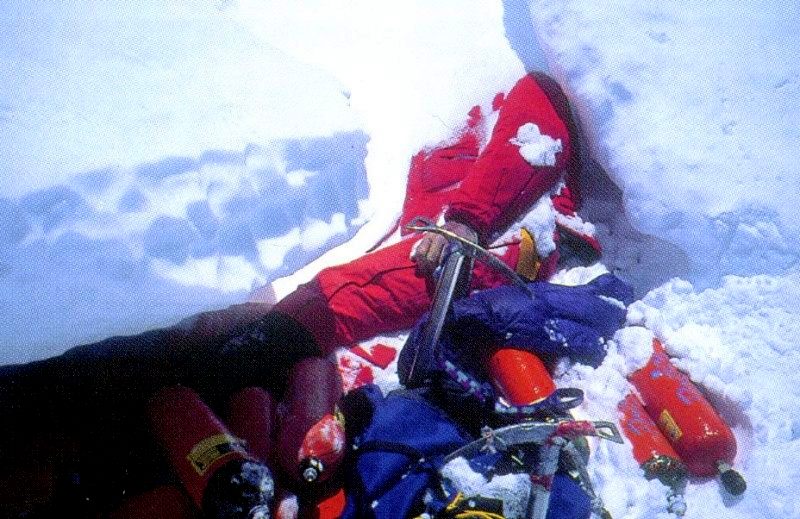
There have been climbers who have stated a desire to be left on the mountain in the event that they are involved in a deadly mishap.
Secondly, a removal would necessitate an independent expedition that would be difficult to combine with a summit bid, and very few people are willing to embark on such an endeavour. Additionally, it would be even more expensive than a bid for a summit with a cost of $200,000 for the attempt in 2017.
The bodies become as hard as rock and frozen to the ground under them, and they cannot easily be lifted up and placed on a stretcher. It took a whole team more than 28 hours to simply separate one body from its resting place. It is a difficult task.
Thirdly, a significant number of the Sherpas have a religious aversion to handling dead bodies, although they have carried down some bodies from lower altitudes when they have been involved in removing other things that have been left on the mountain, such as used oxygen cylinders and clothing that has been dumped.
Clearly, this is in contrast with the Sherpas’ aversion to handling bodies, and in recent years, there have been programs to clean and tidy up the mountain. The Sherpas believe that the mountain is a goddess and that it should be honored.
The melting of glaciers, on the other hand, is bringing more human remains to surface, and as a result, this problem will continue to rear its ugly head.
Why are bodies left on Mount Everest?
Many people who are not familiar with the number of people who have died on Mount Everest are taken aback when they learn that the majority of the dead bodies on Everest will remain there forever. The arguments for leaving the dead behind, on the other hand, are quite rational.
Due to the perils of Everest, recovering a body is incredibly challenging and expensive. In certain cases, it is almost impossible. We are unable to retrieve bodies that are lying in repose above Camp 2 at an altitude of 21,000 feet. As an alternative, the bodies will need to be transported down the mountain in order to be returned.
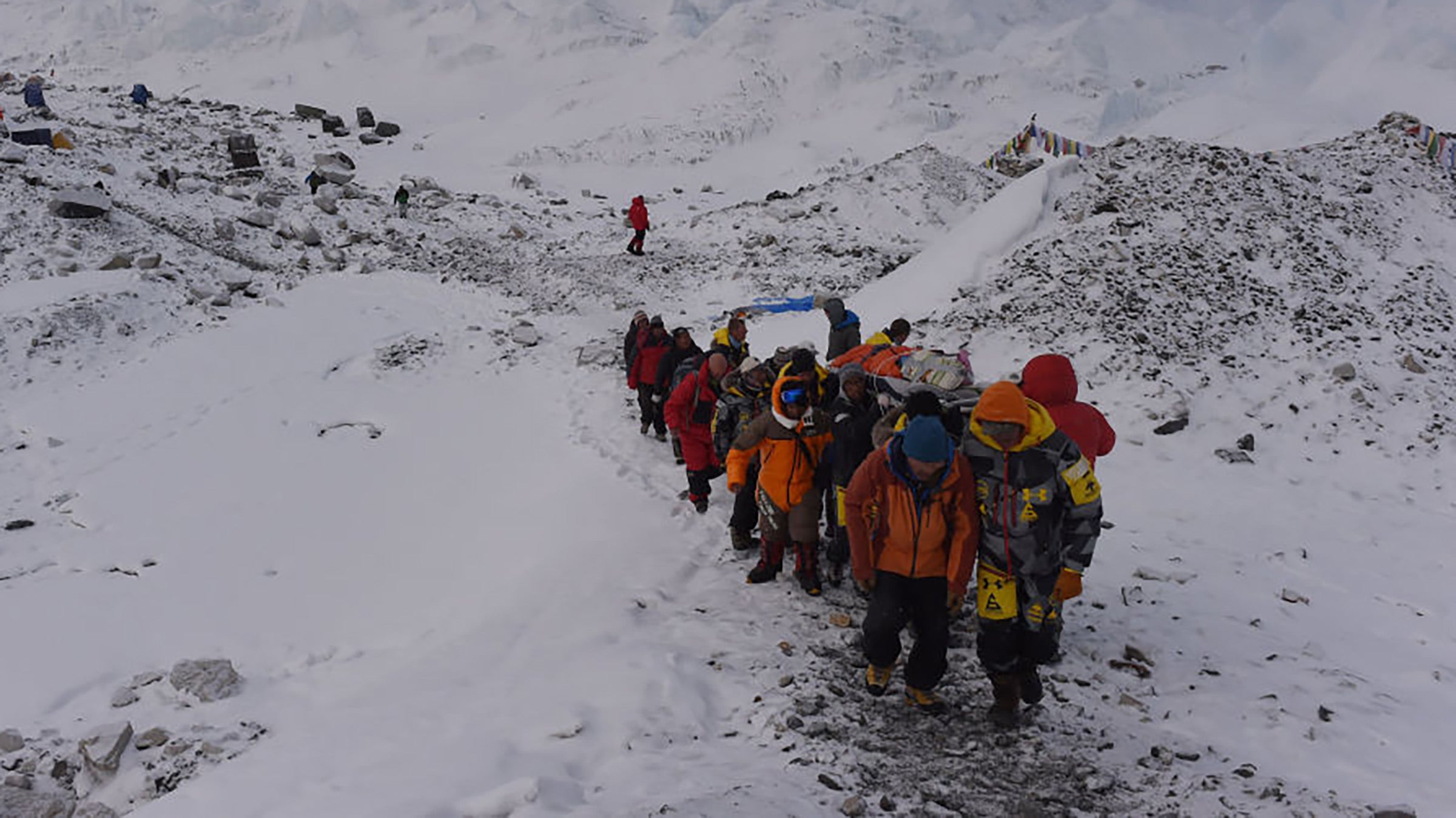
In order to remove a body, it is necessary to have a group of rescuers or Sherpas who are capable of digging out frozen bodies and carrying the additional weight of a frozen corpse further down the mountain. There is a possibility that the cost of such an expedition will exceed $70,000.
Rarely do bodies ever make it out of Everest because of the high cost and the severe risk that they pose to the retrieval team. Moreover, in accordance with the custom that was adopted from sailors who were lost at sea, many mountaineers would rather have their remains remain on the mountain if they pass through it.
The Bodies Of Dead Climbers On Mount Everest Serve As Guideposts
Mount Everest has a tradition that is both ghoulish and practical: the bodies of mountain climbers who have died while climbing the mountain have been used as guideposts on the path leading to the summit.
For mountaineers of the past, the corpses represent the conclusion of a journey, but for climbers of today, they serve as a reliable marker as they strive to reach the illusive peak.
Some of the victims of Everest, such as Green Boots and Sleeping Beauty, are well-known and have grown to become the mountain’s most renowned permanent residents. However, the identities of many of the bodies have not been determined.
Six people lose their lives per year while climbing the highest peak in the world, on average. A mountain avalanche claimed the lives of 19 people in 2015, making it the bloodiest year in the mountain’s recent history.
This record was nearly reached during the climbing season of 2023, when there were at least 12 fatalities and five additional climbers who went missing and were assumed dead. To add insult to injury, it was the busiest year on the mountain to yet. There were a record 463 licenses issued by Nepal.
When sherpas who accompany climbers are taken into account, this indicates that over 900 individuals attempted to reach the peak of the mountain from the south side during the primary climbing season of 2023, which only lasts for approximately eight weeks of each April and May.
There were three Nepalese sherpas who passed away in April as they were attempting to set up the summit rope for other climbers. While climbing to the peak in May, a man from the United States passed away.
When someone passes away on Everest, it might be challenging to remove their body from the mountain. In some instances, the final repatriation can cost as much as $70,000, which is tens of thousands of dollars. Additionally, it can come at a price that is lethal in and of itself: An attempt to retrieve a body from Everest in 1984 resulted in the deaths of two Nepalese climbers.
During her ascent to the peak of Everest in 2018, Lhakpa Sherpa, who holds the record for the most Everest summits by a female climber, reported seeing seven dead bodies.
“Only near the top,” she said in an interview with Insider in 2018, recalling a particular body of a man that “looked alive, because the wind was blowing his hair.”
Her remembrance serves as a sobering reminder that the removal of dead bodies from Mount Everest is a daunting task that may be both expensive and perhaps fatal.
Everest is crowded with tourists
In today’s world, the cost of a once-in-a-lifetime Everest summit might range anywhere from fifty thousand dollars to well over one hundred thirty thousand dollars. The actual number of persons who have perished while attempting to climb up and down, as well as the location of all of those bodies, is difficult to ascertain with absolute certainty.
After a particularly lethal season in 2023, recent estimates of fatalities have reached as high as 322. An inquiry conducted by the BBC in 2015 came to the conclusion that “there are certainly more than 200” bodies lying on the slopes of Everest.
Some hikers blame overcrowding, which may be avoided, for the increase in fatalities that have occurred over the past few decades.
When temperatures begin to rise in May and winds begin to slow down, excellent circumstances for climbing Everest in the springtime can often only endure for a few days. These brief climbing opportunities have the potential to produce lines that are similar to conveyor belts and wound their way up to the peak of the mountain.
There are times when climbers are so eager to reach the top and stake their claim on an Everest summit that they develop a condition known as “Summit Fever,” which causes them to put their lives in danger to achieve success.
Other Everest climbers have voiced their dissatisfaction with the dangerous human traffic jams that occur in the “death zone” of the mountain. This refers to the portion of the trail that extends beyond 8,000 meters (about 26,250 feet), where the air is extremely thin and the majority of people use oxygen masks.
Even if they are wearing masks, this area is not a good location to hang out for an extended period of time. It is also a site where some deliriously insane hikers may begin removing clothes that they absolutely need and talking to imagined companions, despite the fact that the temperature around them is below freezing.
Removing bodies is dangerous and costs thousands of dollars
The removal of bodies from the area known as the death zone is a dangerous task.
“Even picking up a candy wrapper high up on the mountain is a lot of effort because it’s totally frozen and you have to dig around it,” Ang Tshering Sherpa, a former president of the Nepal Mountaineering Association, said in an interview with the BBC in the year 2015. “A dead body that normally weighs 80kg might weigh 150kg when frozen and dug out with the surrounding ice attached.”
In a previous interview with the Canadian Broadcasting Corporation, mountaineer Alan Arnette revealed that before to climbing Everest, he had signed a number of ominous “body disposal” documents, which instructed that his body be left in place on the mountain in the event that he passed away while on the journey.
“Typically you have your spouse sign this, so think about that conversation,” he said in conclusion. “You say ‘leave me on the mountain,’ or ‘get me back to Kathmandu and cremate,’ or ‘try to get me back to my home country.’”
A particular dead body that Everest climbers referred to as “Green Boots” was seen by some of them lying in a cave approximately 1,130 feet from the summit. Everest climbers frequently made reference to this body for many years. An Indian climber named Tsewang Paljor, who was 28 years old at the time of his death, was found dead on the peak in 1996. His death occurred during the same storm that prompted Jon Krakauer to write his best-selling book, “Into Thin Air.”
On May 20, 2019, Pemba Dorjee Sherpa, who has climbed Everest twenty times, was seen at camp three on the peak in Nepal.
However, in recent years, the most notorious corpse on Everest has become more difficult for hikers to locate. This has led to widespread conjecture that the body was either moved or hidden by boulders, as climber Noel Hanna stated to the BBC.
In general, Nepalese Sherpas believe that leaving dead bodies littering their holy mountain is both inappropriate and disrespectful to the mountain gods that they worship. In the year 2019, Nepalese garbage collectors were responsible for removing at least four bodies from the mountain slope.
“There’s sort of this idea that there’s only one mountain that really matters in the kind of Western, popular imagination,” Jennifer Peedom, a filmmaker and director, made this statement to Insider in 2017, when her documentary titled “Mountain” was launched.
Despite the fact that Peedom had climbed Everest four times by the time 2018 rolled around, she stated that the thrill of reaching the top of Everest is mainly confined to the history books, and that for “true mountaineers,” it is merely an exercise in crowd control this day and age.
SOURCE: https://www.tranquilkilimanjaro.com/why-are-bodies-left-on-mount-everest/






